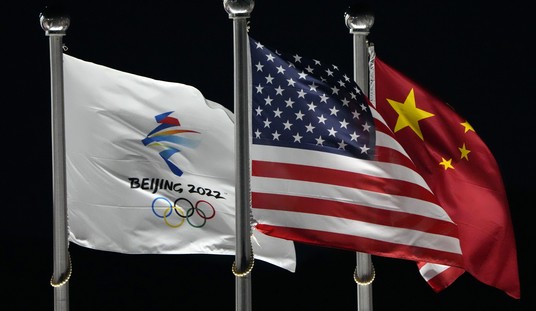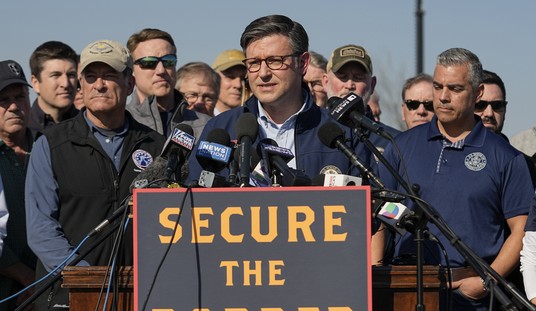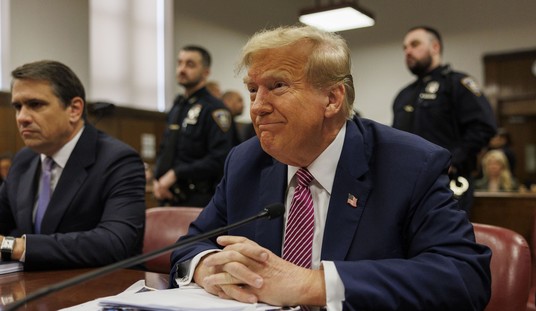This was the sleeper issue of this morning’s hearing before Ron Johnson’s Homeland Security committee. For all the hype lately about mailboxes disappearing off of American streets and mail-sorting machines being taken offline in USPS facilities, the question of how much postage voters might need to pay is the one that most troubled Ruth Goldway. Goldway served on the Postal Regulatory Commission under Clinton, Bush 43, and Obama, and published an op-ed at the Times a few days ago urging everyone to calm down about the Postal Service’s ability to process ballots this fall. They have the money and the manpower to do it, she noted. Mail-in ballots aren’t some enormous load for the USPS relative to the amount of mail they process every day. There’s no reason to expect undue delays…
…unless the Postal Service insists on people paying first-class postage to have their ballot processed efficiently. Typically the agency treats ballots as first-class no matter what, but it appeared that that policy would be changing this year. That could potentially result in ballots with less postage being delivered more slowly, past the deadline for submission. That was the issue to watch when DeJoy appeared before the committee today, Goldway warned.
Most election-related mail is sent at nonprofit rates. The 1993 National Voter Registration Act requires the Postal Service to charge state and local election offices the same price for postage as nonprofit mailers. The Postal Service has a history of providing extra care and attention to election-related mail, on the level of first-class mail: usually two to four days for delivery. A special logo and bar code identifiers were created so that mail sorters were able to pull election mail out from the routine mail stream to be sure it was delivered as soon as possible.
But a recent letter sent by Thomas J. Marshall, the general counsel for the Postal Service, to election officials around the country seems to suggest that election mail will now be treated like regular nonprofit mail (typically three to 10 days for delivery) and may take as long as 15 days. This is not acceptable.
The Postal Service has the capacity to ensure that ballots sent to voters arrive on time and that ballots dropped into the system by voters are postmarked and delivered in times that accord with state and local guidelines. In their meeting with Congress next week, the leaders of the Postal Service should guarantee that election mail will continue to be treated as first-class mail. The Congress should agree that there will be no additional financial support for the Postal Service without this promise.
Democrat Gary Peters put that question to him this morning. Are you going to deliver ballots with first-class efficiency, as is traditional, or are people who absentmindedly fail to pay full freight at risk of seeing their ballots delayed? DeJoy gave him the answer he was looking for.
NEW: "We will deploy processes and procedures that advance any election mail, in some cases ahead of first-class mail," Postmaster General Louis DeJoy testifies amid national outcry over Postal Service changes ahead of the election. https://t.co/7VmACPnLzu pic.twitter.com/EowFyq9Cy2
— World News Tonight (@ABCWorldNews) August 21, 2020
He also assured Rob Portman that, whatever Trump may think about mail-in voting, DeJoy himself supports it:
SEN. PORTMAN: "So you do support voting by mail?"
POSTMASTER GEN. DEJOY: "I do. I think the American public should be able to vote by mail and the postal service will support it."
How you feelin' about that one, folks? pic.twitter.com/5nWhlpyAi0
— The Recount (@therecount) August 21, 2020
He promised that “additional resources” would be brought to bear in the final 10 days before the election to make sure that ballots are delivered on time, although a concrete plan for that hasn’t been developed yet.
That’s the good news, that the worst fears about shenanigans at the USPS appear to be baseless. The bad news is that to some degree the damage has already been done. Thanks to Trump saying last week that he opposes money for the Postal Service because he doesn’t trust universal mail-in voting, lots of Americans have had their faith shaken in the agency and, to a lesser degree, the integrity of the election process writ large.
Calls began flooding into election offices on Friday, the day after Trump said he would oppose a Postal Service bailout, and they have continued since, according to election officials in Michigan, Virginia, Maryland, Georgia, North Carolina and Colorado, among other states…
Some voters want reassurance that they can trust the mail. Others have declared they plan to avoid the mail service altogether.
“I ripped up my mail-in ballot application,” said Colleen Connolly-Ahern, a communications professor at Pennsylvania State University, in State College. “I will be going to my little polling place, putting on my mask and standing in line.”
The onslaught of anxiety has prompted officials to scour for funds to install ballot drop boxes across their communities. Although states and local governments had already adopted plans for hundreds of drop boxes this year, those plans accelerated this week.
Easy prediction: Far fewer people will end up voting by mail this year than polls this summer have indicated. Which might not be the worst outcome to this fiasco, so long as everyone who wanted to vote by mail ends up voting in person — and of course, so long as more extensive in-person voting doesn’t feed a COVID outbreak. The more votes are counted by close of business on Election Night, rather than in the days following, the more confident the country will feel in the outcome.
The one thing DeJoy didn’t give ground on at today’s hearing was the removal of mail-sorting machines from USPS processing centers. The damage there is also already done, it seems: Reportedly 95 percent of the machines that were scheduled to be taken offline have already been taken offline. Emails apparently went out within the USPS just within the last few days warning staff not to reconnect them, notwithstanding DeJoy’s order freezing his reorganization of the agency until after the election. I haven’t seen any claim in the reporting this past week that removal of the machines will meaningfully retard the processing of mail ballots; clearly that’s the assumption underlying the freakout about the machines’ removal, but it’s just an assumption. For now.
SEN. PETERS: Will you bring back any mail sorting machines that have been removed recently?
DeJOY: There is not intention to do that. They are not needed. pic.twitter.com/ClKxv9Gxlf
— Aaron Rupar (@atrupar) August 21, 2020







Join the conversation as a VIP Member